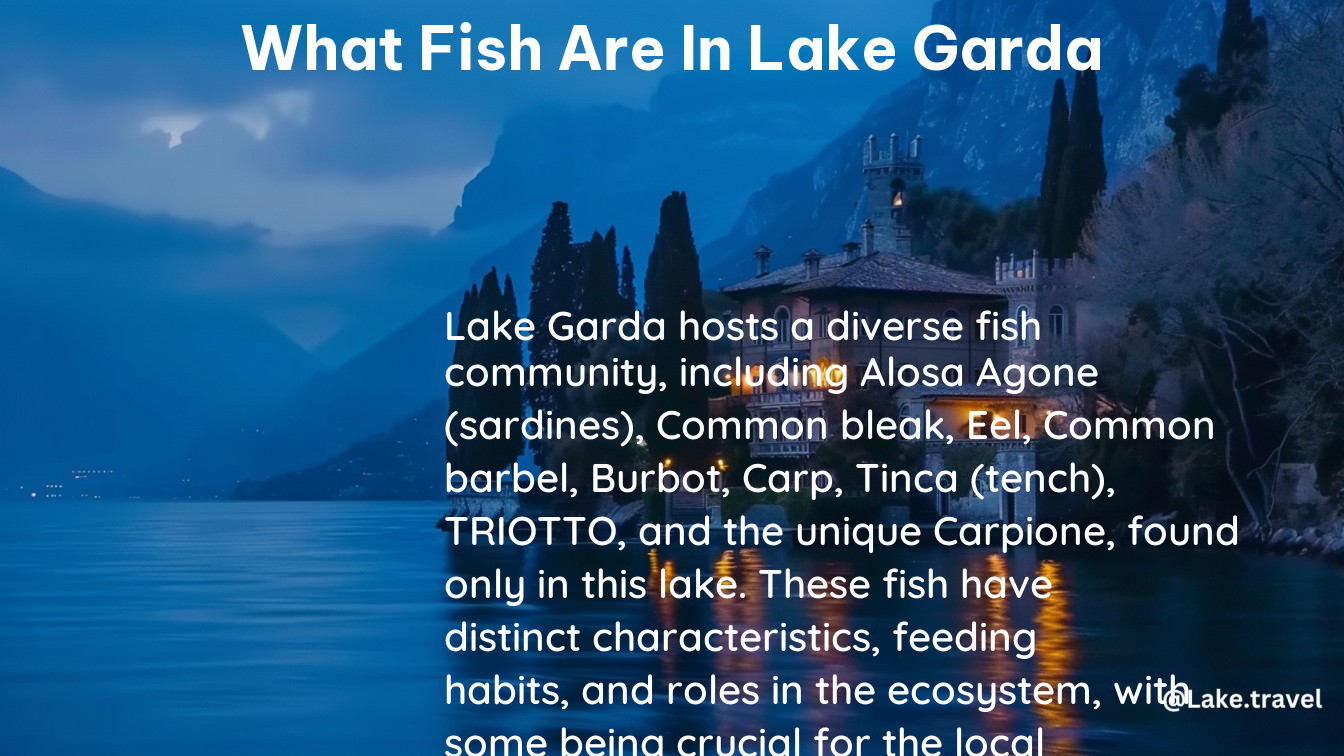Lake Garda is a renowned destination for fishing enthusiasts, offering a diverse array of fish species that have captivated anglers for centuries. From the iconic lavaret to the elusive carpione, this picturesque lake is a true haven for those who love the thrill of the catch. In this comprehensive blog post, we’ll explore the fascinating world of Lake Garda’s fish, delving into their unique characteristics, habitats, and significance in the local ecosystem and cuisine.
Lavaret: The Whitefish of Lake Garda
The lavaret, also known as the common whitefish or European whitefish, is a non-native species that was introduced to Lake Garda in the late 1800s. This member of the Salmonidae family is characterized by a small mouth without teeth and a diet primarily consisting of plankton. Lavaret can grow up to 30/40 cm in length and weigh between 300 and 500 grams. They are found in the lake’s deeper waters, but during the reproductive season, they can be spotted swimming close to the coastline, where they spawn their eggs on the pebbles or sand. Fishing for lavaret is primarily done by professional fishermen using nets, but recreational anglers are also increasingly targeting this species with small fishing rods and artificial lures.
Sardines: The Plankton Feeders of Lake Garda

Sardines, also known as pilchards or Alosa agone, are a very common species in the Pre-Alps lakes, including Lake Garda. These small, silvery fish with dark spots on their dorsals primarily feed on plankton and live in large shoals, serving as a vital food source for predatory species such as trouts and pikes. Sardines can grow up to 25 cm in length and weigh no more than 100/120 grams. Recreational fishing for sardines takes place during the summer, with anglers catching them from boats or the beach using lures called “camolere.” Commercial net fishing is also practiced throughout the year, except during the reproductive period. Sardines have long been an important part of the local market due to their low price and are used in various dishes, including pasta dishes and sauces for fish dishes.
Pike: The Apex Predator of Lake Garda
The pike, with its distinctive “duck beak” mouth and strong, barbed teeth, is the apex predator of Lake Garda. This fearsome fish can have up to 500 teeth on its tongue and prefers to feed on weaker prey or specimens living in difficult conditions. By doing so, the pike helps maintain the balance of the aquatic ecosystem, preventing the excessive proliferation of other species.
Alborella: The Endemic Treasure of Lake Garda
Alborella, also known as aola, agola, avola, or pessàta, is a fish species endemic to Lake Garda. This small fish, with its green back, silvery sides, and white belly, has a slightly upturned mouth and a maximum size of 20 cm. Alborella feeds on plankton, larvae, insects, and plant debris, and lives in numerous schools near the surface of the lake. It spawns between May and August, and its slightly fatty and tasty meat is best enjoyed in the winter months when the fish is more stout. Alborella is commonly dried, salted, or pickled, and can be cooked grilled or in saor, a traditional Venetian dish.
Carpione: The Delicacy of Lake Garda
Carpione is a Salmonid fish that is found only in Lake Garda and has been a part of the local cuisine since the Renaissance. This delicious fish was once considered the main dish of the Republic of Venice. Carpione lives in hibernation in the muddy bottoms of the lake during the winter and follows a mainly omnivorous diet.
Triotto: The Native Schooling Fish
Triotto is a native species of Lake Garda, characterized by a central lateral dark band, large scales, and reddish yellow eyes. It usually moves in herds and takes refuge on deep bottoms during the winter, resting in a sort of hibernation. Triotto follows a mainly omnivorous diet and can weigh up to 4 kg.
Tinca: The Mud-Loving Tench
Tinca, also known as tench, is a fish that loves to take refuge in waters with a muddy bottom and rich in vegetation. It has a yellowish green color with golden reflections and can weigh up to 4 kg. Tinca is recognizable by its black fins and small barbel on the mouth.
Scardola: The Omnivorous Swimmer
Scardola, also known as the rudd, swims mainly in the Lower Lake, moving between the lake basin and the river Mincio. It is an omnivorous fish that prefers plankton, aquatic plants, insects, and mollusks.
Pesce Siluro: The Alien Predator
Pesce Siluro, also known as the Torpedo or Wels catfish, is an alien species that is highly resistant and can live in waters with low oxygen concentrations or even polluted. It can reach a length of up to 2 meters and is a skilled predator that can hunt any fish species.
In addition to these fascinating fish species, Lake Garda is also home to other species such as perch, trout, eel, common barbel, and stickleback. The lake’s fish population is essential for the local ecosystem, and fishing plays a crucial role in maintaining the balance. However, overfishing and water pollution have threatened some species, such as the Lake Garda trout or carpione, which have become very rare today.
References:
– Lake Garda Fish Species
– Garda Lake Fish
– Typical Products: Fish from Lake Garda
– Lake Garda Fish Species
– The Fishes of Lake Garda
